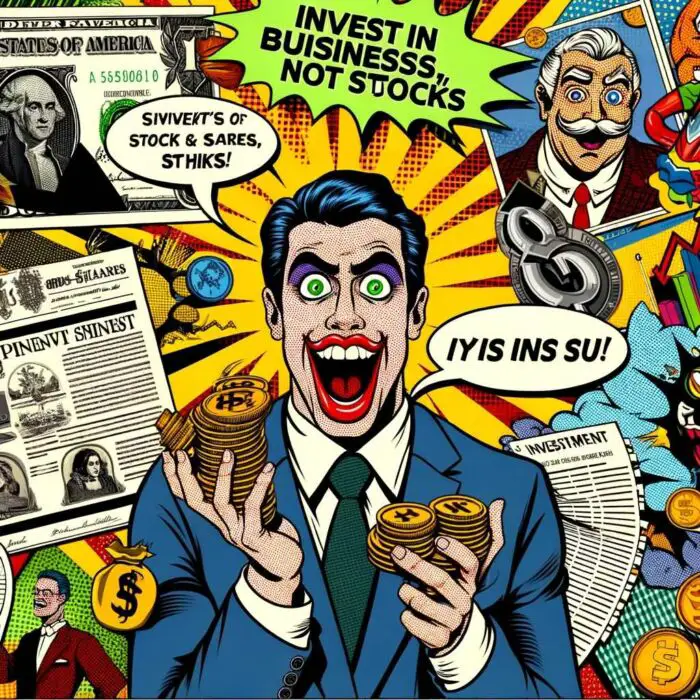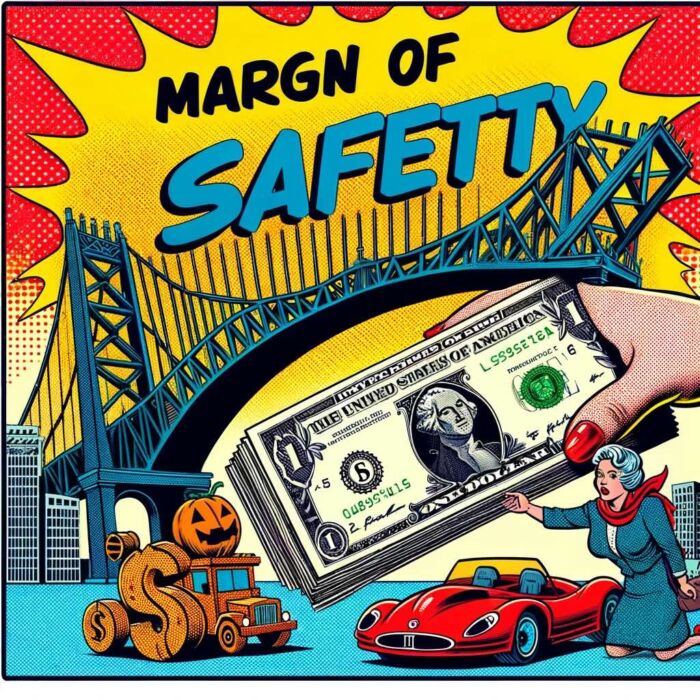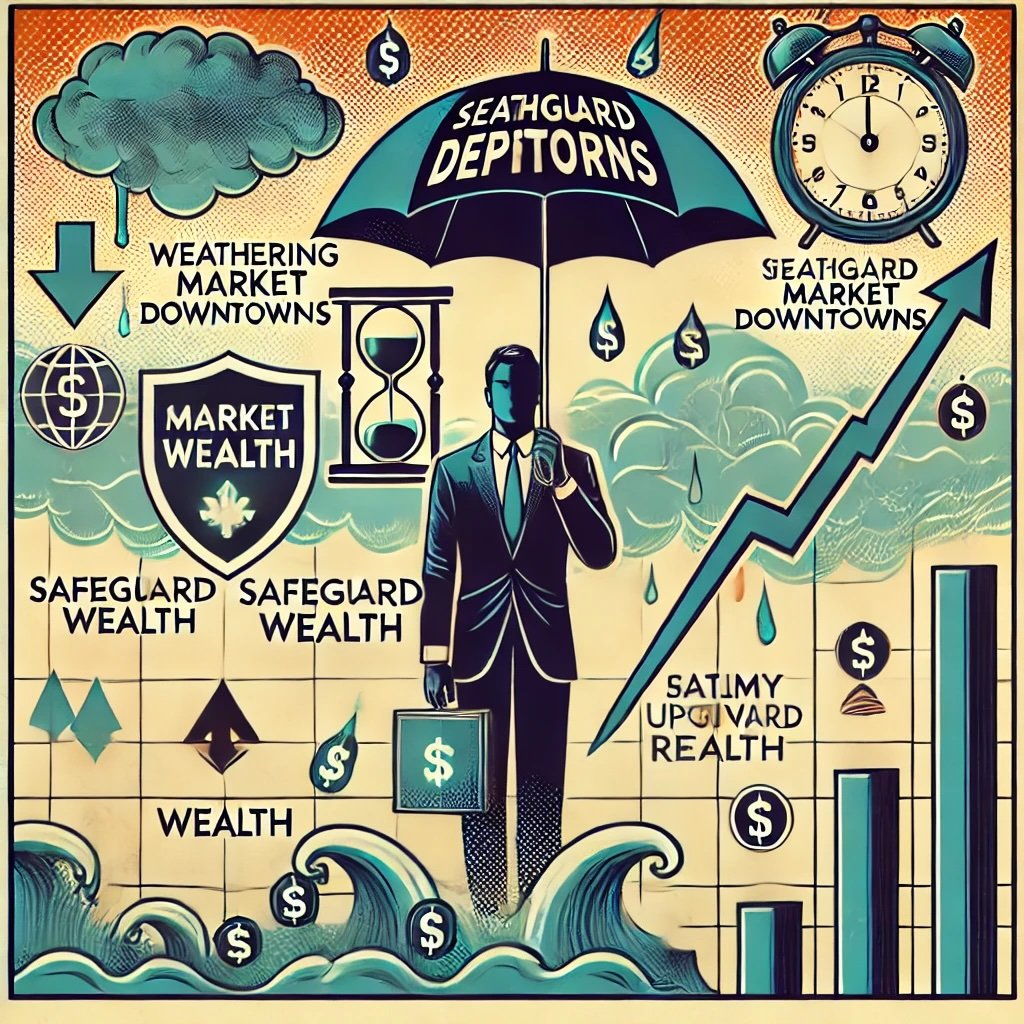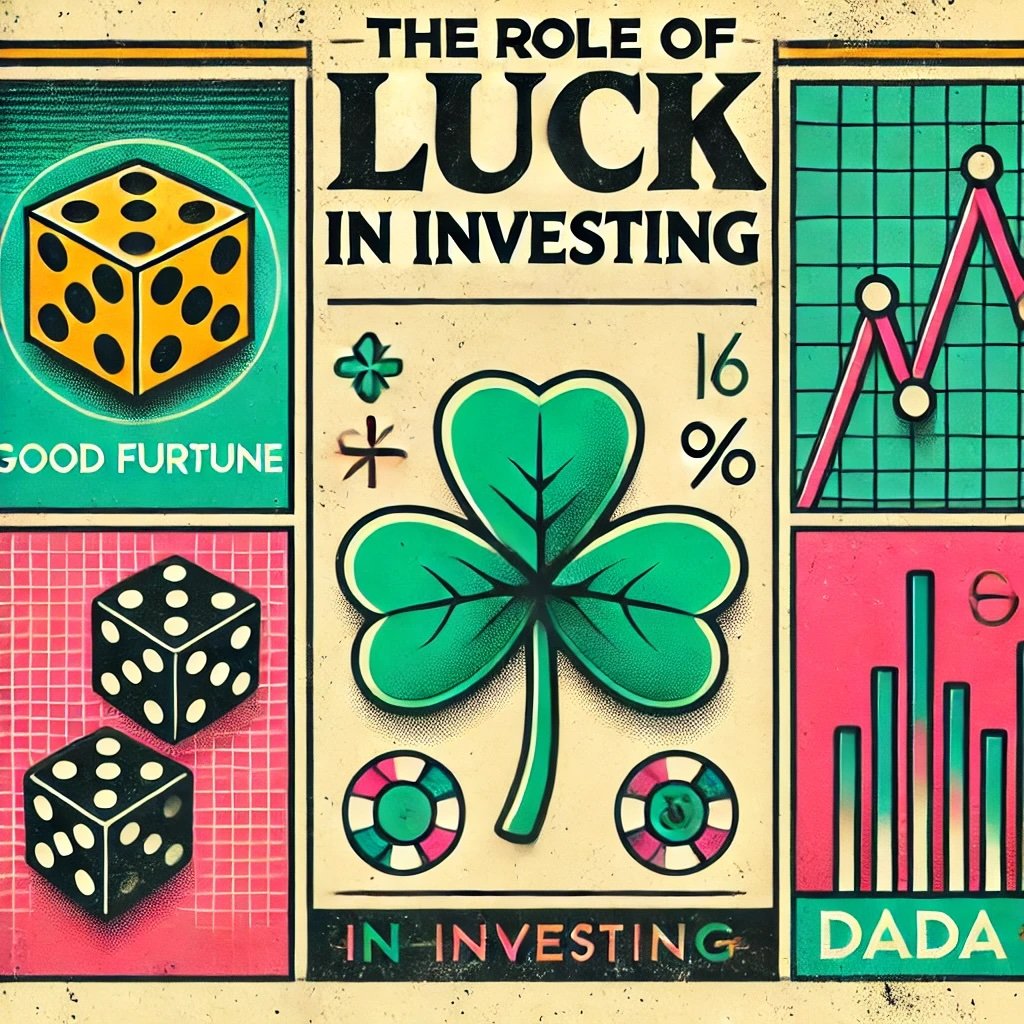When it comes to the world of investing, few names command as much respect and admiration as Warren Buffett. The “Oracle of Omaha,” as he’s often known, is one of the most successful investors in history, amassing an enviable fortune through his holding company, Berkshire Hathaway. Born in 1930 during the Great Depression, Buffett was introduced to the world of finance at a tender age by his father, who was a stockbroker. Buffett made his first investment at the age of 11, and there was no looking back. His net worth was estimated at over $100 billion, making him one of the richest people in the world.

Investing in Uncertain Times
Investing is a journey filled with many ups and downs, twists and turns. The stock market, as with life itself, is inherently unpredictable. Uncertain times, be it recessions, pandemics, or market volatility, are an inevitable part of this journey. While some investors panic and sell during these turbulent times, others see it as an opportunity. The latter group views uncertainty as a chance to buy quality businesses at discounted prices, using market downturns to their advantage. In this universe of opportunistic investing, Warren Buffett is perhaps the most distinguished of its inhabitants.

Warren Buffett’s Strategies in the Context of Uncertainty
Warren Buffett’s investment strategies have been shaped and honed in the cauldron of uncertainty. Buffett has seen it all – from the peaks of economic booms to the depths of financial crises. His investing philosophy isn’t just about picking winners, but also about weathering the storms. He’s a proponent of long-term investing, once quipping, “Our favorite holding period is forever.” Understanding his strategies is not just about mimicking his moves, but rather learning how to navigate the turbulent waters of the investment world with a level-headed approach. Buffett’s principles can serve as a lighthouse, guiding investors safely through the dark and stormy nights of market uncertainty.

Through this article, we will delve into the mind of this investment titan and try to unravel the strategies he employs during uncertain times. While his strategies might not turn us into billionaires overnight, they might provide us with a sturdy ship to navigate through the sea of investing uncertainties. Let’s embark on this journey and learn from one of the best in the business.

Warren Buffett’s Investment Philosophy

Buffett’s Investment Philosophy
A cornerstone of Buffett’s impressive success is his simple yet potent investment philosophy, encapsulated by his sage words, “Rule No.1: Never lose money. Rule No.2: Never forget rule No.1”. Buffett’s investment strategy is a tapestry of timeless principles, braided with his unique investment insights and unyielding discipline. It’s not about being the smartest in the room but being patient, disciplined, and sticking to the rules.
His philosophy rests upon three key pillars – value investing, buy and hold, and investing in what you understand. He is a fervent disciple of the Benjamin Graham School of Value Investing, which asserts that one should only buy stocks that are priced significantly below their intrinsic value, providing a margin of safety.
Importance of Long-term Investing
If investing were a game, Buffett would be the grandmaster of patience. He is an ardent advocate of the ‘buy and hold’ strategy. The short-term fluctuations in the market are just noise to him, barely more than distractions from the real goal: holding quality stocks over a long period of time. He does not chase quick profits or overnight success. Instead, he builds his fortune slowly, believing in the power of compounding returns. He once remarked, “Someone is sitting in the shade today because someone planted a tree a long time ago.”

Investing in Businesses, Not Just Stocks
One of the most distinguishing traits of Buffett’s investment philosophy is his approach to stocks not just as ticker symbols or speculative instruments, but as pieces of actual businesses. When Buffett buys stocks, he thinks like a business owner, not a trader. He meticulously studies the business fundamentals, scrutinizing everything from the company’s management quality to its competitive advantage, or ‘moat’ as he often calls it.
Buffett’s methodology is not about timing the market or following hot trends; it’s about identifying great businesses trading at good prices and sticking with them for the long haul. He famously said, “It’s far better to buy a wonderful company at a fair price than a fair company at a wonderful price.” This approach underscores his belief in the power of businesses to generate wealth over time.
In the world of high-frequency trading and algorithm-driven decision making, Buffett’s philosophy may seem old-fashioned to some. But one can’t argue with the results. Buffett didn’t become one of the world’s richest men by following the herd; he got there by adhering to his principles, even when they fell out of favor. His philosophy, a beacon of sagacity, stands as a testament to the virtues of patience, discipline, and a deep understanding of businesses. In the following sections, we will examine how these principles have guided him during uncertain times, enabling him to convert turbulent tides into waves of opportunity.
Value Investing and the Concept of Margin of Safety
Explanation of Value Investing
Value investing is like hunting for hidden treasures. It’s a strategy that involves seeking out companies whose stock prices don’t reflect their intrinsic value. The concept was born out of the teachings of Benjamin Graham and David Dodd at Columbia Business School, where the idea of scrutinizing financials and buying undervalued stocks was put on the pedestal. The value investor essentially seeks to profit from market overreactions, believing that the market occasionally does a poor job of pricing a company’s future prospects. Hence, they delve into the balance sheets, income statements, and cash flow statements, seeking out clues that point to the company’s actual worth.

Importance of the Margin of Safety
Now, imagine you’re constructing a bridge. You wouldn’t build it to hold the exact maximum weight of the vehicles that would pass over it, would you? You’d include a margin of safety, an extra capacity, just in case something heavier decides to cross. The same principle applies to investing.
The margin of safety is the difference between a company’s intrinsic value and its market price. It’s a cushion that protects an investor from overpaying for a stock and from potential downturns in the market. Simply put, it’s about finding dollar bills priced for fifty cents. The margin of safety is a risk-averse strategy, preparing for the worst-case scenario.
Warren Buffett’s Approach to Value Investing and Margin of Safety
Buffett, a star student of Benjamin Graham, took the teachings of his mentor and painted his own masterpiece. While he wholly embraced the concept of value investing, he added his own brush strokes to it. Where Graham was overly focused on the numbers, Buffett started looking beyond the figures. He adopted a more qualitative approach, focusing on a company’s management quality, its business model, and its competitive landscape.
For Buffett, the margin of safety is not an optional extra; it’s a fundamental principle. He insists on buying businesses for less than they’re worth to mitigate the risk of losses. While the idea seems simple, it requires rigorous research and patience to wait for the right opportunity. Buffett would rather sit on the sidelines holding cash than rush into an overpriced investment. He’s quoted as saying, “The stock market is designed to transfer money from the active to the patient.”
Through this lens of value investing and the importance of a margin of safety, Buffett has navigated through the treacherous seas of the stock market, consistently finding safe harbors of solid returns. His approach has served as a compass, guiding him not only through smooth seas but also through the tempests of financial crises and market turmoil.
source: Investing with Tom on YouTube

Warren Buffett’s Approach to Uncertainty
How Warren Buffett Views Market Uncertainty
If there’s one person who knows how to find serenity amidst the chaos of the market, it’s Warren Buffett. He sees market uncertainty not as a threat, but an opportunity. Uncertainty, volatility, panic – these are words that make an average investor’s heart race, but for Buffett, they spell opportunity. He famously said, “Be fearful when others are greedy, and greedy when others are fearful.”
In the throes of market turmoil, many investors are influenced by fear and speculation, often making impulsive decisions. However, Buffett, like a seasoned sailor who has witnessed countless storms, remains steadfast. He understands that the market, like the sea, has its periods of calm and turmoil and uses this understanding to his advantage.

Role of Patience and Discipline in His Investment Approach
In the world of investing, patience and discipline are not virtues; they are necessities, and Buffett embodies both. When it comes to investing, he is the epitome of a stoic, never letting emotions guide his decisions. He remains patient, waiting for the right opportunities to present themselves, and stays disciplined, sticking to his investment philosophy no matter how turbulent the market becomes.
Buffett’s approach is akin to a diligent fisherman, waiting patiently by the river, refusing to cast his net until he spots the right fish. He does not chase after every opportunity that comes his way. Instead, he bides his time, waiting for the right business at the right price. His disciplined approach prevents him from straying off course, even when the market waves are particularly tempestuous.
Warren Buffett’s Perspective on Market Downturns and Volatility
Buffett views market downturns and volatility through a different lens. For him, they are not signs of impending doom but windows of opportunity. When the market is in turmoil, it often drives prices down, sometimes even below the intrinsic value of companies. Buffett, with his keen eye for value, swoops in, seizing the opportunity to buy quality businesses at bargain prices.
While others perceive market downturns as disastrous, Buffett’s long-term perspective allows him to see beyond the immediate crisis. He views downturns as temporary and believes that strong companies will eventually recover and grow. His optimism amidst crises is encapsulated in his quote, “During such scary periods, you should never forget two things: First, widespread fear is your friend as an investor, because it serves up bargain purchases. Second, personal fear is your enemy.”
The blend of optimism, a long-term perspective, patience, and discipline shapes Buffett’s approach to uncertainty. It enables him to remain calm amidst the market storm, steering his investment ship towards profitable shores. As we venture further into this discussion, we will discover how these principles translate into tangible strategies for investing in uncertain times.
source: Investment Knowledge on YouTube

Buffett’s Strategies for Investing in Uncertain Times
Investing in Quality Businesses
Buffett’s strategy during uncertainty resembles his approach during calmer times, with a stronger emphasis on the quality of businesses. He seeks out companies with strong competitive advantages, reliable cash flows, and exceptional management teams. He believes that high-quality businesses can weather economic downturns and emerge stronger on the other side. While the stock prices of such businesses may fluctuate in the short term due to market conditions, their intrinsic value remains robust in the long term.
Holding Cash Reserves
During uncertain times, cash is not just king, but the entire monarchy. Buffett maintains significant cash reserves, waiting for the right opportunity to invest. This strategy has two main advantages. First, it provides liquidity during downturns when excellent businesses may become undervalued. Second, it offers a safety net to withstand the shocks of the market downturns. The importance of having a cash reserve was evident during the 2008 financial crisis when Buffett’s Berkshire Hathaway was able to make investments that others could not afford.

Importance of a Long-term Perspective
The long-term perspective is not just a strategy for Buffett; it’s a philosophy. He strongly believes that the stock market is a device for transferring wealth from the impatient to the patient. During uncertain times, the market may punish even the best of companies, but Buffett remains unperturbed. He understands that market volatility is a part of the game and focuses on the long-term growth potential of his investments.
Ignoring Market Noise and Focusing on Fundamentals
The information age has brought with it a cacophony of noises. News headlines, market rumors, and speculative trends can often lead investors astray. However, Buffett remains deaf to this noise. He focuses on the fundamentals of a business, such as its earnings, assets, liabilities, and overall financial health. In times of uncertainty, this focus on fundamentals allows him to identify businesses that are undervalued by the market, offering opportunities for significant returns.
Diversification Versus Concentration
The debate between diversification and concentration is an age-old one in the world of investing. Buffett’s perspective is nuanced. He believes that “Diversification is protection against ignorance. It makes little sense if you know what you are doing.” That said, he also understands that not all investors have the time or expertise to thoroughly research each investment. Therefore, for the average investor, diversification can be a useful tool to spread risk.
In the end, investing in uncertain times, according to Buffett, is not drastically different from investing in any other time. It involves the same principles of value investing, with an added emphasis on patience, discipline, and maintaining a long-term perspective. While the market may be in turmoil, Buffett’s investment strategy remains as steady as a rock, weathering the storms and emerging stronger on the other side. As we venture deeper into Buffett’s strategies, let’s explore how he has applied these principles during real-world crises.
Case Studies of Buffett’s Investments in Uncertain Times

The 2008 Financial Crisis
The 2008 financial crisis sent shockwaves through the global economy. Financial institutions crumbled, stock markets plummeted, and widespread panic ensued. However, amidst this chaos, Warren Buffett saw an opportunity. With an ample cash reserve on hand, Buffett made a series of bold moves. He bought stakes in blue-chip companies like Goldman Sachs and General Electric, providing them much-needed liquidity in exchange for preferred stock and lucrative dividend yields.
Buffett also wrote an op-ed in the New York Times in October 2008, boldly stating, “Buy American. I am.” He was advocating for long-term investment in American businesses when many were fleeing the market. This audacious approach during one of the worst financial crises in history not only further bolstered his status as an investment sage but also led to substantial returns in the subsequent market recovery.
The 2020 COVID-19 Pandemic
The onset of the COVID-19 pandemic created an unprecedented health and economic crisis. Businesses shuttered, unemployment rates soared, and the stock market nosedived. However, Buffett, living up to his reputation, calmly navigated through this crisis. He used the downturn as an opportunity to further invest in Apple, a high-quality business in his portfolio. He also made a $10 billion investment in energy company Dominion Energy, demonstrating his long-held practice of investing in undervalued, fundamentally strong businesses.
However, it wasn’t all about buying. Reflecting his philosophy of investing only in what he understands, Buffett sold all his airline stocks. He admitted that the pandemic had changed the business landscape for airlines, and he no longer felt he understood the industry’s future.

Other Instances of Market Volatility
Throughout his investing career, Buffett has faced numerous instances of market volatility. Whether it was the dot-com bubble burst in the early 2000s or the oil price shock in the 1970s, he has remained unflappable. In the late 1990s, during the height of the dot-com boom, while other investors were flocking to tech stocks with little to no earnings, Buffett chose to stay away, not investing in what he didn’t understand. He faced criticism and was even considered out of touch. But when the bubble burst, Buffett was vindicated.
These case studies demonstrate how Buffett uses the principles and strategies discussed earlier to navigate uncertain times. Whether it’s focusing on long-term value rather than short-term trends, maintaining ample cash reserves, or having the courage to go against the herd, Buffett’s actions during these crises underline his investment wisdom. However, it’s crucial to remember that while these principles can guide us, they are not infallible. Even Buffett has made his share of mistakes, and as he often states, the key is to learn from them.

Criticisms and Limitations of Buffett’s Approach
Situations Where Buffett’s Strategies May Not Work
While Buffett’s approach to investing has proven successful over decades, there are situations where it may not be as effective. For instance, during a protracted bear market or economic recession, his buy-and-hold strategy may lead to significant paper losses, and recovery might take a considerable amount of time. Similarly, during periods of rapid technological change or industry disruption, investing in “moat” companies with traditional business models may result in underperformance relative to growth-oriented or innovative sectors. Buffett’s past reluctance to invest in technology stocks, citing a lack of understanding, meant missing out on the early growth of some major tech companies.

Common Criticisms of Buffett’s Investment Approach
Buffett’s investment approach has faced criticism on several fronts. Some argue that it is overly conservative, potentially missing out on high-growth investment opportunities. Others point out that Buffett’s approach requires a level of expertise and time commitment for research that most individual investors lack, making it difficult to replicate.
There’s also criticism regarding the scalability of Buffett’s methods. As the capital under management grows, the universe of investments that can significantly move the needle shrinks. Buffett’s focus on significant stakes in large companies is a strategy that small individual investors might not be able to adopt.
Understanding the Limitations of His Strategies
While there’s much to learn from Buffett’s investment philosophy, it’s important to understand its limitations. Buffett is a unique investor with an exceptional understanding of business and finance, combined with a temperament that allows him to be patient and rational in all market conditions. His strategies, developed and refined over decades, are deeply intertwined with his personality and his specific circumstances.
Further, the strategies are largely based on the assumption that the market will behave in the future as it has in the past. However, as the saying goes, “past performance is not indicative of future results.” Markets and economies evolve, and what worked in the past may not work in the future.
Ultimately, while Buffett’s investment philosophy provides valuable lessons and can serve as a guiding light for investors, it should not be followed blindly. Each investor must consider their own financial goals, risk tolerance, investment knowledge, and individual circumstances when developing their investment strategy.
source: We Study Billionaires on YouTube
Conclusion: Buffett’s Perspective and Strategies on Investing in Uncertain Times
In the whirlwind of market uncertainty, the investment principles and strategies of Warren Buffett stand as a beacon of light for investors navigating the tempestuous financial seas. From adopting a long-term perspective, placing a premium on quality businesses, and emphasizing the fundamentals over market noise, to holding a defensive cash reserve and understanding the nuanced balance between diversification and concentration, Buffett’s strategies provide a robust framework for investing, particularly in times of uncertainty.
Adopting a Tailored Approach Based on Individual Investor’s Goals and Risk Tolerance
Yet, as enlightening as Buffett’s strategies are, they shouldn’t be taken as an investment gospel. Investing is not a one-size-fits-all endeavor. Each investor has unique financial goals, risk tolerance, and personal circumstances. Buffett’s strategies serve as guideposts, but they must be adapted to align with the individual’s needs. It’s the investor’s task to glean insights from these strategies and tailor them into a bespoke investment plan that suits their unique financial journey.

Relevance of Buffett’s Strategies for the Contemporary Investor
In the ever-evolving landscape of the investment world, the wisdom of Warren Buffett remains relevant. His focus on the enduring principles of value investing, his embrace of market uncertainty as a source of opportunity, and his unflinching patience and discipline stand as timeless truths, regardless of how much the market dynamics shift.
But perhaps the most vital lesson from Buffett’s approach is not a specific investment strategy, but a philosophy – the idea that investing is more than just a way to make money. It’s a long-term commitment that requires continuous learning, a clear understanding of risk, and above all, the wisdom to remain calm amidst the market storm.
As we step into the future, teeming with uncertainties and opportunities alike, the teachings of Warren Buffett serve as a compass, guiding us towards informed and thoughtful investing. And while the journey may be fraught with market volatility, with these lessons in our arsenal, we can sail forth with confidence.
Important Information
Comprehensive Investment Disclaimer:
All content provided on this website (including but not limited to portfolio ideas, fund analyses, investment strategies, commentary on market conditions, and discussions regarding leverage) is strictly for educational, informational, and illustrative purposes only. The information does not constitute financial, investment, tax, accounting, or legal advice. Opinions, strategies, and ideas presented herein represent personal perspectives, are based on independent research and publicly available information, and do not necessarily reflect the views or official positions of any third-party organizations, institutions, or affiliates.
Investing in financial markets inherently carries substantial risks, including but not limited to market volatility, economic uncertainties, geopolitical developments, and liquidity risks. You must be fully aware that there is always the potential for partial or total loss of your principal investment. Additionally, the use of leverage or leveraged financial products significantly increases risk exposure by amplifying both potential gains and potential losses, and thus is not appropriate or advisable for all investors. Using leverage may result in losing more than your initial invested capital, incurring margin calls, experiencing substantial interest costs, or suffering severe financial distress.
Past performance indicators, including historical data, backtesting results, and hypothetical scenarios, should never be viewed as guarantees or reliable predictions of future performance. Any examples provided are purely hypothetical and intended only for illustration purposes. Performance benchmarks, such as market indexes mentioned on this site, are theoretical and are not directly investable. While diligent efforts are made to provide accurate and current information, “Picture Perfect Portfolios” does not warrant, represent, or guarantee the accuracy, completeness, or timeliness of any information provided. Errors, inaccuracies, or outdated information may exist.
Users of this website are strongly encouraged to independently verify all information, conduct comprehensive research and due diligence, and engage with qualified financial, investment, tax, or legal professionals before making any investment or financial decisions. The responsibility for making informed investment decisions rests entirely with the individual. “Picture Perfect Portfolios” explicitly disclaims all liability for any direct, indirect, incidental, special, consequential, or other losses or damages incurred, financial or otherwise, arising out of reliance upon, or use of, any content or information presented on this website.
By accessing, reading, and utilizing the content on this website, you expressly acknowledge, understand, accept, and agree to abide by these terms and conditions. Please consult the full and detailed disclaimer available elsewhere on this website for further clarification and additional important disclosures. Read the complete disclaimer here.





